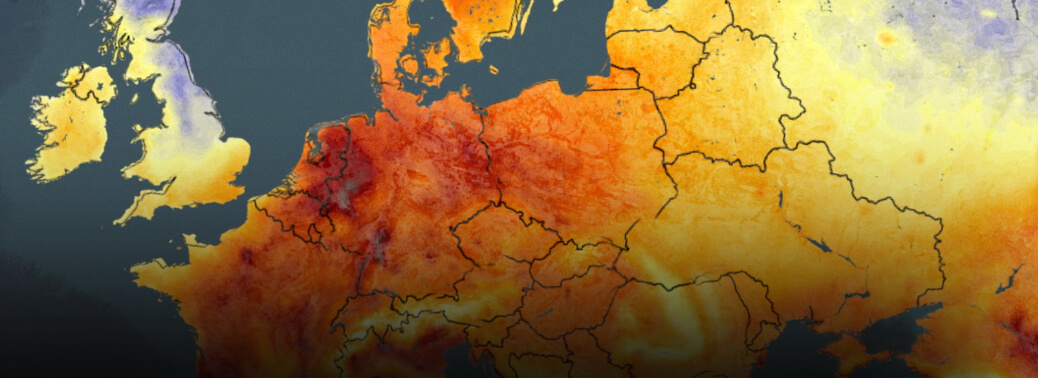EUROPE HEATWAVE
02, Jul 2019

Prelims level : Global Climate Related
Mains level : Important Geophysical phenomena such as earthquakes, Tsunami, Volcanic activity, cyclone etc., geographical features and their location - changes in critical geographical features (including water bodies and ice-caps) and in flora and fauna and the effects of such changes.
- Context: A massive heatwave has gripped Western European countries and caused severe heat warnings in several parts of Europe.
What is a Heatwave?
- A heat wave is a period of Unusually Hot Weather that typically lasts two or more days. To be considered a heat wave, the temperatures have to be outside the historical averages for a given area.
- Classifying a heat wave varies from country to country, because what is seen as extremely hot in one place may seem within normal range in another.
- WMO listed several factors to be considered while analysing heatwave. These include defining a specific threshold for variables such as temperature to be considered extreme, as well as a human perspective of extremes.
How India Meteorological Department Declares Heatwave?
- The India Meteorological Department does not consider a heatwave unless the maximum temperature crosses 40°C in the plains and 30°C in the hills.
- Where the normal maximum is 40°C or less, the heatwave departure from normal is 5°C to 6°C and the severe heatwave departure is 7°C or more.
- Where the normal maximum is more than 40°C, the heatwave departure from normal is 4°C to 5°C while the severe heatwave departure is 6°C or more.
- In places where the maximum temperature reaches 45°C or more, the IMD declares a heatwave irrespective of the normal.
What are the health hazards of heatwave?
- The heat poses a risk to people’s health, agriculture and the environment. It is the departure from normal — or what people are used to — that makes heatwaves dangerous.
- Babies and older people are particularly vulnerable because their bodies are not as well able to regulate their own temperatures as those of young adults.
- High temperatures can cause exhaustion, heat stroke, organ failure, and breathing problems.
The European Heatwave:
- According to the World Meteorological Organization (WMO) the heatwave in Europe is a result of Warm Air Masses from Africa and more such events are expected to follow during this northern hemisphere summer.
- The heatwave in Europe follows extreme heat episodes in India, Pakistan, parts of the Middle East and Australia.
- According to WMO its too early to blame Climate Change for these trends. However, the WMO agreed that the heatwave is consistent with climate scenarios which predict more frequent, drawn out and intense heat events as greenhouse gas concentrations lead to a rise in global temperatures.
- Apart from heatwaves, various climate models have predicted alternating periods of prolonged droughts and heavy flooding in some areas.






